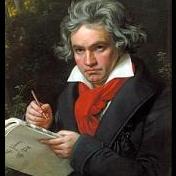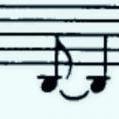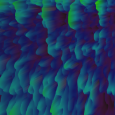Search the Community
Showing results for tags 'canon'.
-
Fugue_In_F_Major__No._1__-_Aw_Ke_Shen.pdfI know its kinda weird/too late to ask since i have published it but... Do y'all consider this to be a fugue or a canon...or even something else? I am quite confused because of the varied array AND definitions of fugue and canon. The melody in the right hand is followed exactly in the left hand just one bar after for all parts. It is just that for some parts, the accompaniments /accompanying chords of the right hand are not present in the left hand for some parts as I want it to be that way - to have the chords retain their meanings and not make it sound too strong. So idk... This is one of my simplest pieces ( my 18th finalized and published piece ); I titled it " Fugue In F Major No. 1 ". Not sure if I should re-title it ( no point for the videoscore itself that has been published in my Instagram, TikTok and Youtube accounts ) at least in the parts that can be retitled - my Musescore and Souncloud accounts and the title ( though not videoscore ) in Instagram and Youtube. Nowadays I avoid deleting my posts just to re-upload them. Would be grateful if y'all can give feedback : ) Thanks : ) Video Score In YouTube: https://www.youtube.com/watch?v=yafHwhEacM4 Score In MuseScore: https://musescore.com/user/62605720/scores/13517182 The audio version is sped-up.
-
Hi The crab canon (cancrizans in Latin, cangrejo in Spanish) is know (wiipedia) as well as "retrograde canon, canon per recte et retro or canon per rectus et inversus)... is an arrangement of two musical lines that are complementary and backward. If the two lines were placed next to each other (as opposed to stacked), the lines would form something conceptually similar to a pallindrome. The name 'crab' refers to the fact that crabs are known to walk backward (although they can also walk forward and sideways). The most famous crab canon is the one Bach wrote for the Musical Offering. There are no many canon of this type, because it is more an exercise. It has its difficulty. The crab canon harmonizes one melodic line with itself in retrograde. So, you have to write a double (invertible) counterpoint, taking care of the fifth interval, because once inverted it becomes a dissonant fourth. So, fifths should be treated as dissonances. I have written, with time, some crab canon, just for fun and as a counterpoint exercise. But I had a concern with the possibility of writing a double crab canon. That is to say: two crab canon which can sound together. I have not seen any methods to to this. But I developed my own. I wrote a simple cancrizans 6 + 6 measures. Afterwards I wrote. second one in a lower register, having in mind the first. Third, I put both canon together. Fourth, I wrote the result with all the lines in retrograde. I think more combinations are possible, but taking care of the intervals. At least, it was fun. I'll keep this piece... Perhaps I use it in a larger format as a part of an orchestral work.
- 7 replies
-
- 2
-

-
- cancrizans
- crab
-
(and 2 more)
Tagged with:
-
I have always been amazed by the rhythmic devices that took place in the Renaissance. One of them is the canon in prolatio, or prolationum. In this type of canon the voices start at the same time developing the same melody at several duration of the notes. One of the best examples is the Missa prolationum by Johannes Ockeghem. I wanted to take this concept to a more contemporary field. So, in this short piece, the melody starts at 5/4 (piano 1 left hand), at 5/4 half duration of the notes (piano 1 right hand), and the same figures than the original melody but in 7/8 (piano 2 right hand). Later, the left hand of the piano 2 adds drones or profound tones. As you can see, the tempos must be fixed proportionally so that the bars are aligned. I have seen some other pieces with this polyrhythm / polytempo, but 7/8 against 5/4 is my own experiment. Of course, although the piece is tonal, there are some clashes here and there. I love using ancient techniques in my own context. How to write this in the editor is another issue. I have done it in Finale, which I no longer use. This one is done in Dorico.
-
Hi, I have been sudying Ligeti's techniques on micropolyphony, an this is the result. Taking the canon technique as in "Lontano" (by Ligeti)... I used noteperformer, with a bit of mixing-mastering (only to give amplitude and some depth). Yes I know there are better libraries (which I have).., but I don't have the time to work with them. This piece has some meaning to me (about flashbacks from a traumatizing period of my life when I went into a coma for several weeks, because of covid). Hope you like it,....., or hate it.
-
This was composed as an experimental piece aimed to combine a "musical mode" originating in india called todi (which is basically a scale with a flat 2nd, sharp 4th, and a flat 6) with western counterpoint. Since the scale is really unstable and dissonance, it was impossible to write perfectly consonant counterpoint using the conventional rules. So I decided to make use of the dissonance to compose something which sounds meaningful and expressive to my ears. As always, constructive criticism and feedback is most appreciated! 🙂
-
Hello everyone! I recently finished composing a fugue for brass trio as a second part to the canon for brass trio that I posted some time ago. Since I do think that both pieces belong together and sound much better together, I post both pieces as one. The canon is a strict canon at the octave for the most time, but on measures 15, 21 and 22, the canon is broken on the top voice in order not to reach higher than the high C. The fugue starts at 1:45. It starts in Gminor but finishes in Gmajor (in the same way the canon started). It has a theme (subject), two countersubjects and it contrasts in rythm and tonality (since it starts in Gmin) with the canon. The measures in which the subject (or the tonal answer) appears and their tonality are the following: m.30-37: Gmin subject | Dmin answer | Gmin subject m.42-45: Bbmaj subject | Fmaj answer m.48-50: Dmaj subject m.53-54: Emin subject m.59-60: Gmaj subject Any feedback, suggestion or comment is welcome. Thanks for listening and hope you like it!
-
Hello everyone! I just finished a canon at the octave for three voices which I composed for practicing counterpoint. I did it for practicing three part counterpoint without having to spend to much time thinking about the melodic contourn for each voice. As an exercise it was really interesting and fun to compose. I composed it without instruments in mind, I just chose the brass trio because it sounded the most beautiful to my ears. Therefore, I am not sure whether some things might be unplayable (specially the highest notes from the trumpet). The canon is strict for the whole piece except for the B-C-D-E ascendent scale going to the EM chord chord (V of ii) in bars 11, 15 and 19, which goes through the natural, harmonic and melodic minor versions. Besides that, the only moment in which the canon is broken is on the last measure. Composition-wise, I felt really restricted because of the canon rules so I am really interested about the different techniques that could be used for adding interest to such strict pieces. Also, the strict canon made everything harder so probably there are many parallel octaves and fifths I did not see :S. Any comment or suggestion is welcome. Thank you for listening!
-
This was inspired by the double canons by Brahms for female voices. But I wanted to experiment with a tonal row.
-
So, I am working on a set of canons as a prelude to the fugue. No, not literally, as in I would put these before the fugues I write. No, what I mean is that I view the canon as being simpler than the fugue in all sorts of ways and thus as a preparation for fugue writing. I aimed for a more Bach like feel to this canon than the Pachelbel like Canon in Bb that I composed for woodwind quartet. I even went so far as to write it for harpsichord instead of piano to further get that Bach feel to it. Now, why am I mentioning Bach? Well, he is the composer that keeps encouraging me to go ahead and write a fugue. I put some text in the score related to keys and counterpoint. Now I have been told that my canon is really a canon at the sixth. Alright, I'm fine with that. I have also been told that my canon is full of dissonant strong beats and just in general, unresolved dissonance. Here is the first canon in my set of 48 canons. What do you think of it? Does it sound Baroque in its nature? Where are my counterpoint errors exactly? And what are those errors? Do you think I should add a bass line to this?
-
I'm still not satisfied with my counterpoint, so I wrote these two little practice pieces. They're not mentioned for any instruments, but I had to choose something when making an mp3. Also, this is my first finished canon, that is I've written many canonical passages but this is my first standalone finished canon :D What do you think of these?
- 2 replies
-
- counterpoint
- canon
-
(and 1 more)
Tagged with:
-
So I have been studying counterpoint for a long time, like more than a year. And I have tried writing fugues before because I am a fast learner and I figured that if I studied counterpoint, I would be able to write a fugue. Well, that hasn't happened yet. My 4 voice fugue attempts have always been futile(getting parallel octaves even when I'm trying hard not to get parallel octaves). So I figured that maybe, I'm just not ready for 4 voices yet. That and the fact that I have done canons before my extended study of counterpoint(mainly Bach style counterpoint I'm studying because I view Bach as the master of counterpoint and who better to learn from than the master) made me decide to do a 2 voice canon. And since all of my previous canons have been in major keys, I decided to do this one in a minor key. Now to decide on the voices. There are so many voice combinations. Here they are for 2 voices: Soprano and Alto Soprano and Tenor Soprano and Bass Alto and Tenor Alto and Bass Tenor and Bass 6 voice combinations may not seem like a lot, but it does lead to a lot of decisions. Then after deciding on the voice combination, there is deciding whether the higher voice or the lower voice is the comes voice(in other words, the voice that starts the canon). And then there are decisions related to contrapuntal techniques(like do I want it to be a crab canon(1 voice is the retrograde of the other)? Mirror canon(1 voice is the inversion of the other)? Table canon(1 voice is the retrograde inversion of the other)? Augmentation canon? Diminution canon?). I decided to go simple with this canon. No inversion or retrograde. No augmentation or diminution. As for the voice combination, I decided on soprano and tenor. This naturally lead me towards doing a canon at the octave, one of the most simple of interval canons. And I decided on doing my canon with vocals instead of instruments(which is why you will see that I don't go any faster than 16th notes in the canon). If I were to write this canon for instruments, I could easily put in a 32nd note entry. But, unless the piece is very slow, 32nds are hard for the human voice and at a certain tempo, it becomes impossible. So the fastest that I go in this canon is 16th notes. I have put a lot of text in the music, the text is my own contrapuntal analysis of it. Is there anything that I missed? And are there any mistakes besides the parallel octaves? Here is my incomplete canon:
-
I went over this piece once a teacher I had (on counterpoint) told me I should notate the different tempi for each instrument. What do you think? The world of polyrhythm-polytempi is wide. This is a canon in prolatio where every line is the same at different ratios.
- 1 reply
-
- canon
- prolationum
-
(and 4 more)
Tagged with:
-
In my ongoing project of composing six small preludes, this one was very difficult to write for me and I am not very satisfied with the result. Basically, it is a canon from measures 1-11 with the upper voice leading, and and then a canon from measures 12-30 with the lower voice leading. M. 1-6 and 12-17 are virtually identical with the voices just exchanged and once in the tonic, then in the dominant (double counterpoint). The tonal plan is C Major -> G Major -> e minor -> G Major -> C Major. Very simple, but it was a new experience for me to change keys in a canon. I wanted to compose it with a hint of moto perpetuo movements, but this didn’t work out. So, without further ado, the prelude in its current state:
-
Hey guys, I wrote a short piece for two pianos. I'm wondering if it could be arranged for four hands piano, and how playable it is. (my piano skills are non-existent) . Any other suggestions are welcome as always. Hope you enjoy!
-
- 2 replies
-
- canon
- harpsichord
-
(and 1 more)
Tagged with:
-
This a short and simple canon for harpsichord written in three part counterpoint. The outer two voices form a strict canon at the octave and the middle voice is in free counterpoint. Let me know what you think!
- 4 replies
-
- harpsichord
- canon
-
(and 1 more)
Tagged with:
-
Still getting familiar with harp writing (and pedals). A classic canon Part A in G minor at the seventh (or second + octave) Part B: D min at the fourth down motu contrario Part A': the same A but inverted counterpoint. harp canon - SCORE.pdf
- 2 replies
-
- canon
- counterpont
-
(and 1 more)
Tagged with:
-
This is just an attempt to incorporate my studies on canon to a more modern sound. Parts AB are harmonised in a standard way (concert pitch always). Parts A'B' are in canon: A) the trumpet leads and the trombones are in canon at the sixth one in natural and the other in motu contrario. B) trombones in thirds in canonic style at the sixth and octave. Greetings!
- 6 replies
-
- motu contrario
- canon
-
(and 1 more)
Tagged with:
-
Hi everyone, After listening to J.S. Bach - Crab Canon I thought I'd have a go and write one too. (It's a good composition challenge, I'd recommend it) https://soundcloud.com/maxmitchellmusic/crab-canon NB: To anyone who's interested, a crab canon is a piece where the melody is played, then played backwards (or retrograde), and then the retrograde and original melody are played simultaneously.
-
This little piece uses different contemporary techniques such us random dynamics, interval set, dodecaphonic scales, etc..., in a counterpoint background including canon (octava, motu contrario, prolation).
- 2 replies
-
- rondo
- pitch class set
-
(and 4 more)
Tagged with:
-
To celebrate this day, I've been working on this piece. It's a big canon in prolation. It's not a live performance, so the slurs are for expression (for the software to do them).
-
I was shocked listening to some kind of canon from the Renaissance. They use polyrhythm extensively. So I tried... This little canon works this way: Two parts (8 + 8 measures). The middle voice and the bottom voice are in 5/4. The middle runs twice faster. The upper voice is the same than the bottom one but in 7/8. The gaps when one voice finishes earlier than others (very few gaps, indeed) are in free counterpoint. I like the result, romantic and impressionistic with mild dissonances.
- 2 replies
-
- prolation
- mensuration
-
(and 1 more)
Tagged with:
-
This is an exercise. Taking the bass from Purcell's Dido Lament (when I am laid) as a ground bass, I built a canon at the unison.
-
Hi Sometimes I also write very very short pieces just to try new sound comination, serial rows, etc... I like the word oxymoron and its meaning: made up of two or more words that seem to be opposite to each other, or actually are opposite. For example, the words "Wise fool", "Warm freezer", "Legal murder" In English the plural is oxymora (as other Greek words). But in Spanish the plural is not clear: oxímorones, oxímorons, ?? Well, these are serial mini pieces: I keep them as ideas for other things, or who knows, to make a set by themselves.
-
In this case, I wanted to use the litlle form of sonatina to non traditional harmonies. The result was a sonatina in canonic style.





